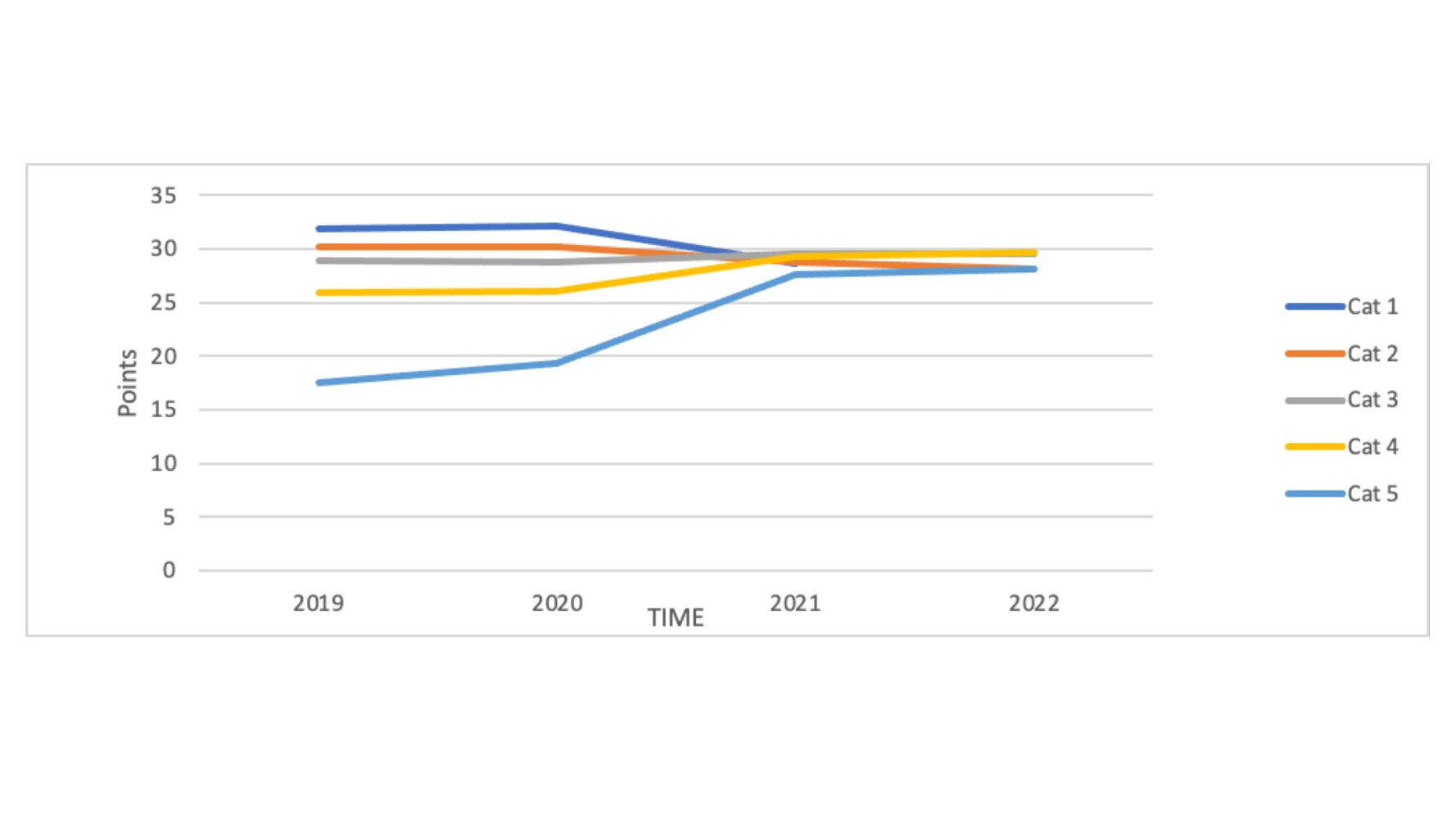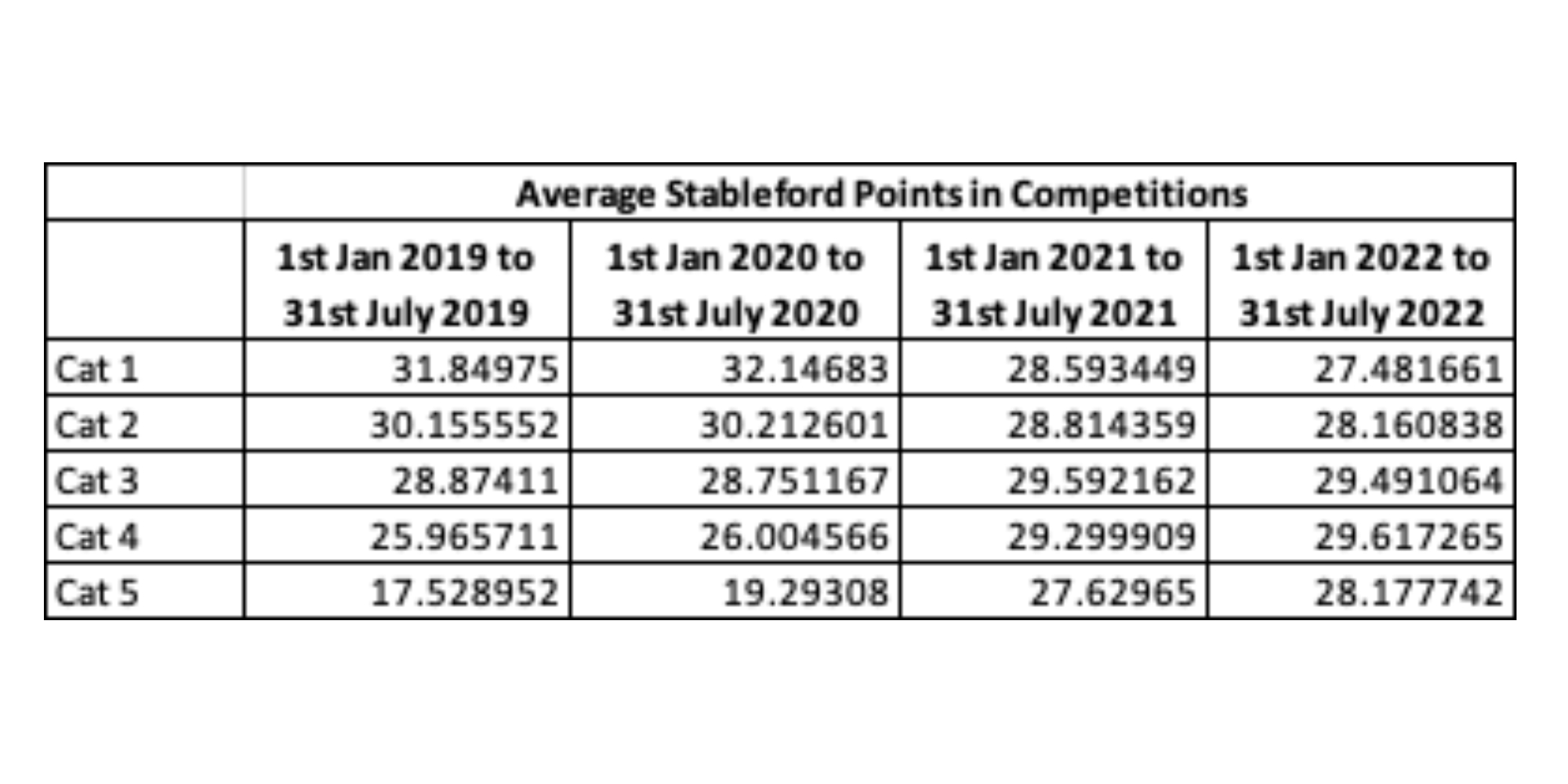Data Reveals World Handicap System Is Levelling Playing Field
Golf Monthly has obtained data from HowDidiDo that shows the World Handicap System is working effectively to make competition fairer.


The World Handicap System was implemented in this country back in November 2020, meaning we have now had almost two complete seasons to witness the effect on handicaps and scoring of a system based on average scoring versus the previous system based on aggregate scoring.
A principal objective of the WHS has been for golfers’ handicaps to be more representative of their current playing ability, as the system allows handicaps to be more fluid with calculation based on average scoring. That should mean that, across the handicap categories, players have a handicap that is fair and representative, making competition more equal.
Stableford Scoring Almost Equal
Data collated and provided to Golf Monthly by HowDidiDo – Europe’s largest network of golfers – confirms that WHS is achieving that goal. The average Stableford points score in competition has gone from dramatically favouring those in the lower categories pre WHS to being almost equal (if anything favouring the mid to high handicappers.)
The table below and the graph above shows there’s now just under two points between the average total scored in competition between players in all categories. That has reduced from almost 13 points difference in the 2020 season (the last before WHS was implemented.)

Not Such Good News For Category 1
Notably, the average score of Category 1 golfers has come down by over 4.5 points pre to post WHS implementation.
Golf Monthly has been aware of anecdotal evidence and has received correspondence from lower handicap golfers who are concerned that the new system hurts their chances of winning in club handicap events. We wanted to try to prove or disprove if this is the case so went to HowDidiDo for some more hard data.
We wanted to see what had happened to the average handicap of winners by category. It’s been suggested that the handicaps of the lowest handicap golfers have, on average, come down with WHS owing to the more consistent nature of their play and the likelihood that they will have eight or more solid rounds within their last counting 20. The figures show this might be the case. The average handicap of winners in Category 1 has come down by some 0.5 of a point post WHS compared to only very minor changes in all other categories – see table below.
Subscribe to the Golf Monthly newsletter to stay up to date with all the latest tour news, equipment news, reviews, head-to-heads and buyer’s guides from our team of experienced experts.

is it a problem?
That might not seem like much. But 0.5 of a shot from 3.4 to 2.9 is a 15% decrease compared to changes of less than 1.5% in all other categories.
If those percentages in handicap reduction are indicative, it goes quite some way to explaining why the average competition Stableford score for Category 1 players has come down so dramatically since WHS – Their handicaps are indeed lower.
In fact, this year in competition (to end July,) Category 1 players have posted the lowest average Stableford score of all categories – 27.48 compared to the highest of 29.62 in Category 4… That’s quite a turnaround from 2020 when Cat 1 averaged more than 6 points more than Cat 4!
That shows the system is fairer than it was though. Category 1 players now feel hard done by as they’re not winning everything in sight, but there’s a difference of just 2 points across the board, compared to the 13 before…
The problem is that Category 1 players are more consistent and are likely to play more. During the season, they work on their game, find a vein of form, put in more General Play scores and are pleased to see their handicap improving. Casual players in higher categories are capable of rogue low scores but also capable of playing poorly compared to their best and so the average of scores counting to their handicap index stays higher.
No system is ever going to give every amateur of every standard an absolutely equal chance. There are too many variables at play for that to happen. But the numbers here show the WHS is doing a better job of keeping things level across the board and giving more players a chance. The Category 1 players might not like it but, going by these stats, any disadvantage they now have is far less than the advantage they had under the old system.

Fergus is Golf Monthly's resident expert on the history of the game and has written extensively on that subject. He has also worked with Golf Monthly to produce a podcast series. Called 18 Majors: The Golf History Show it offers new and in-depth perspectives on some of the most important moments in golf's long history. You can find all the details about it here.
He is a golf obsessive and 1-handicapper. Growing up in the North East of Scotland, golf runs through his veins and his passion for the sport was bolstered during his time at St Andrews university studying history. He went on to earn a post graduate diploma from the London School of Journalism. Fergus has worked for Golf Monthly since 2004 and has written two books on the game; "Great Golf Debates" together with Jezz Ellwood of Golf Monthly and the history section of "The Ultimate Golf Book" together with Neil Tappin , also of Golf Monthly.
Fergus once shanked a ball from just over Granny Clark's Wynd on the 18th of the Old Course that struck the St Andrews Golf Club and rebounded into the Valley of Sin, from where he saved par. Who says there's no golfing god?